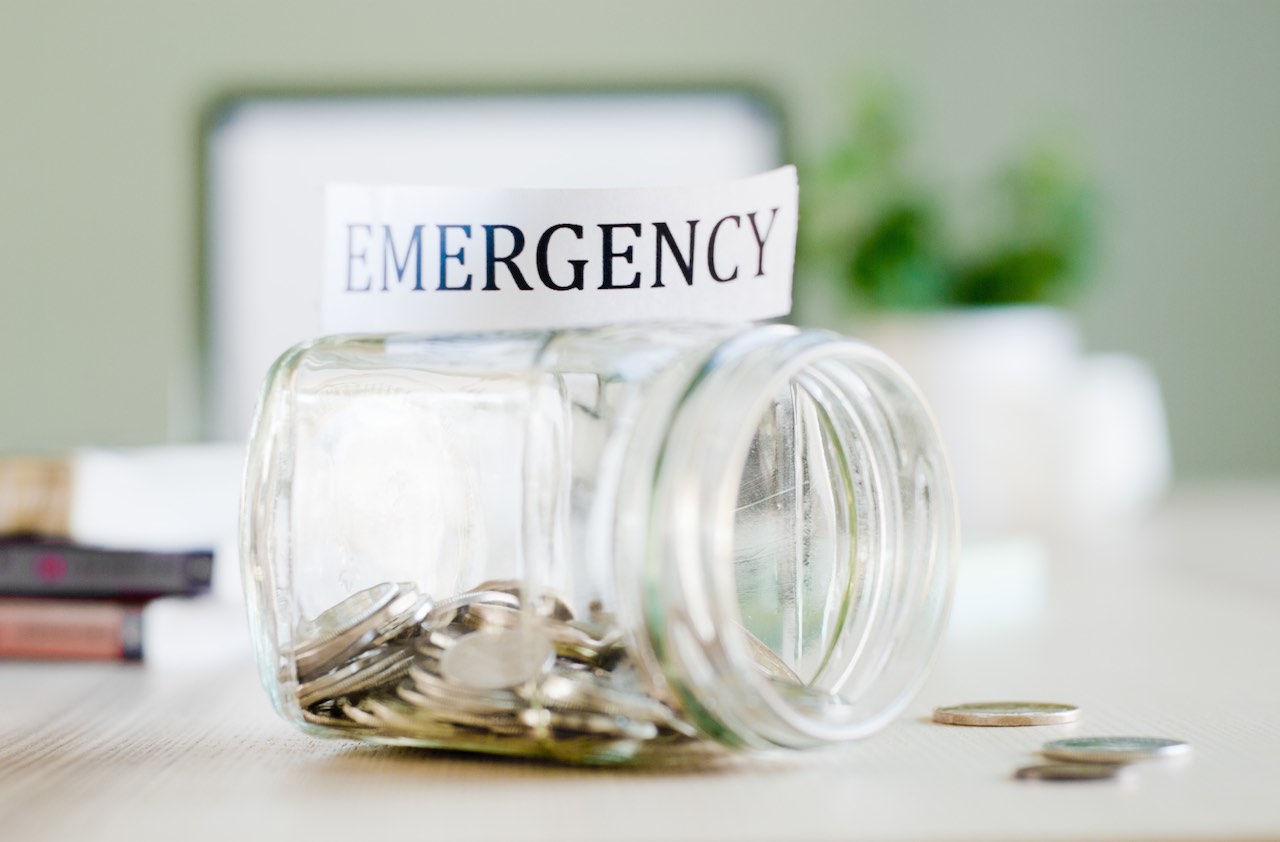Best Places to Get Money in an Emergency When You Don't Have an Emergency Fund
If you don't have enough saved for a rainy day, here are four sources to tap.


It’s easy to underestimate what you need to set aside in an emergency fund. A dual-income household with reliable cash flow should keep at least three months’ worth of living expenses in a savings account or short-term certificates of deposit. But if you are the sole provider, have an irregular income or face steep child-care costs, you should save six or more months’ worth of expenses. The tool at www.hellowallet.com/emergencysavings can help you estimate the amount of money you should set aside. For many families, an emergency fund should have tens of thousands of dollars.
If you haven’t saved enough to cover your emergency, consider tapping these sources, in roughly this order:
Home equity. If you’re a homeowner with a home-equity line of credit (HELOC), borrowing from it is one of the best ways to bridge the gap. “You’re borrowing against equity you already have and paying yourself back,” says Michael Gibney, a certified financial planner (CFP) at Highland Financial Advisors in Riverdale, N.J.
From just $107.88 $24.99 for Kiplinger Personal Finance
Become a smarter, better informed investor. Subscribe from just $107.88 $24.99, plus get up to 4 Special Issues

Sign up for Kiplinger’s Free Newsletters
Profit and prosper with the best of expert advice on investing, taxes, retirement, personal finance and more - straight to your e-mail.
Profit and prosper with the best of expert advice - straight to your e-mail.
Setting up a line of credit is a good idea even if you haven’t earmarked any of the money. You can borrow up to your limit, often for a 10-year period, before you have to repay principal. Interest rates recently averaged 5.1%, according to HSH.com, and interest on up to $100,000 in home-equity debt used for any purpose is usually tax-deductible.
Investments. Another option is to sell investments from taxable accounts. David Wirth, a CFP at Savant Capital Management in McLean, Va., recommends tapping short-term bonds because there is unlikely to be a significant taxable gain. If you decide to sell stocks or stock funds, stick with those that you’ve owned for more than a year so you’ll be taxed at the long-term capital-gains rate. Or you could sell investments worth less than you paid for them and use the losses to offset gains.
Credit card. If you charge your car repairs with a credit card but can’t pay off the balance before the grace period ends, you’ll start racking up interest. You might be able to save a few bucks on interest if you transfer a balance to a credit card with a 0% annual percentage rate to pay off the higher-rate card. That could work if you are disciplined about paying off the balance before the 0% rate expires—typically in about 12 months (and watch transaction fees, which are often 3% of the transferred balance). Alternatively, if you have a bill with a due date a month out, you could apply for a card with a 0% introductory rate.
But before adding to your card collection, compare rates and terms at peer-to-peer lending sites, such as Lending Club or Prosper. Both services let you take out personal loans at fixed rates, with APRs recently starting at 5.99%. But you’ll need a high credit score and meet other conditions to qualify for the best rates.
Retirement accounts. If you have no other options, consider tapping a Roth IRA. You can withdraw contributions from a Roth anytime, tax- and penalty-free. Once you’re 59½ and you’ve held the account for at least five years, you can withdraw earnings tax- and penalty-free as well. Or you could borrow from your 401(k). You avoid taxes and penalties and make payments back to your account with interest. But if you leave your job, you’ll have to repay the loan, typically within 60 days of leaving, to escape taxes and possibly a 10% penalty.
What about taking withdrawals from a traditional IRA or 401(k)? You’ll pay taxes and, unless you’re near retirement age, a 10% penalty.
Profit and prosper with the best of Kiplinger's advice on investing, taxes, retirement, personal finance and much more. Delivered daily. Enter your email in the box and click Sign Me Up.

-
 Stocks See First Back-to-Back Losses of 2026: Stock Market Today
Stocks See First Back-to-Back Losses of 2026: Stock Market TodayRising geopolitical worries and a continued sell off in financial stocks kept pressure on the main indexes on Wednesday.
-
 Countries That Will Pay You to Move: Cash Grants, Incentives and What to Know
Countries That Will Pay You to Move: Cash Grants, Incentives and What to KnowExplore real relocation incentives — from cash grants and tax breaks to startup funding — that make moving abroad or to smaller towns more affordable and rewarding.
-
 Mortgage Protection Insurance: What It Covers and When It Makes Sense
Mortgage Protection Insurance: What It Covers and When It Makes SenseHow mortgage protection insurance works, what it costs, and when it’s actually useful in a financial plan.
-
 9 Types of Insurance You Probably Don't Need
9 Types of Insurance You Probably Don't NeedFinancial Planning If you're paying for these types of insurance, you may be wasting your money. Here's what you need to know.
-
 Amazon Resale: Where Amazon Prime Returns Become Your Online Bargains
Amazon Resale: Where Amazon Prime Returns Become Your Online BargainsFeature Amazon Resale products may have some imperfections, but that often leads to wildly discounted prices.
-
 Roth IRA Contribution Limits for 2026
Roth IRA Contribution Limits for 2026Roth IRAs Roth IRAs allow you to save for retirement with after-tax dollars while you're working, and then withdraw those contributions and earnings tax-free when you retire. Here's a look at 2026 limits and income-based phaseouts.
-
 Four Tips for Renting Out Your Home on Airbnb
Four Tips for Renting Out Your Home on Airbnbreal estate Here's what you should know before listing your home on Airbnb.
-
 Five Ways to a Cheap Last-Minute Vacation
Five Ways to a Cheap Last-Minute VacationTravel It is possible to pull off a cheap last-minute vacation. Here are some tips to make it happen.
-
 How Much Life Insurance Do You Need?
How Much Life Insurance Do You Need?insurance When assessing how much life insurance you need, take a systematic approach instead of relying on rules of thumb.
-
 When Does Amazon Prime Day End in October? Everything We Know, Plus the Best Deals on Samsonite, Samsung and More
When Does Amazon Prime Day End in October? Everything We Know, Plus the Best Deals on Samsonite, Samsung and MoreAmazon Prime The Amazon Prime Big Deal Days sale ends soon. Here are the key details you need to know, plus some of our favorite deals members can shop before it's over.
-
 How to Shop for Life Insurance in 3 Easy Steps
How to Shop for Life Insurance in 3 Easy Stepsinsurance Shopping for life insurance? You may be able to estimate how much you need online, but that's just the start of your search.